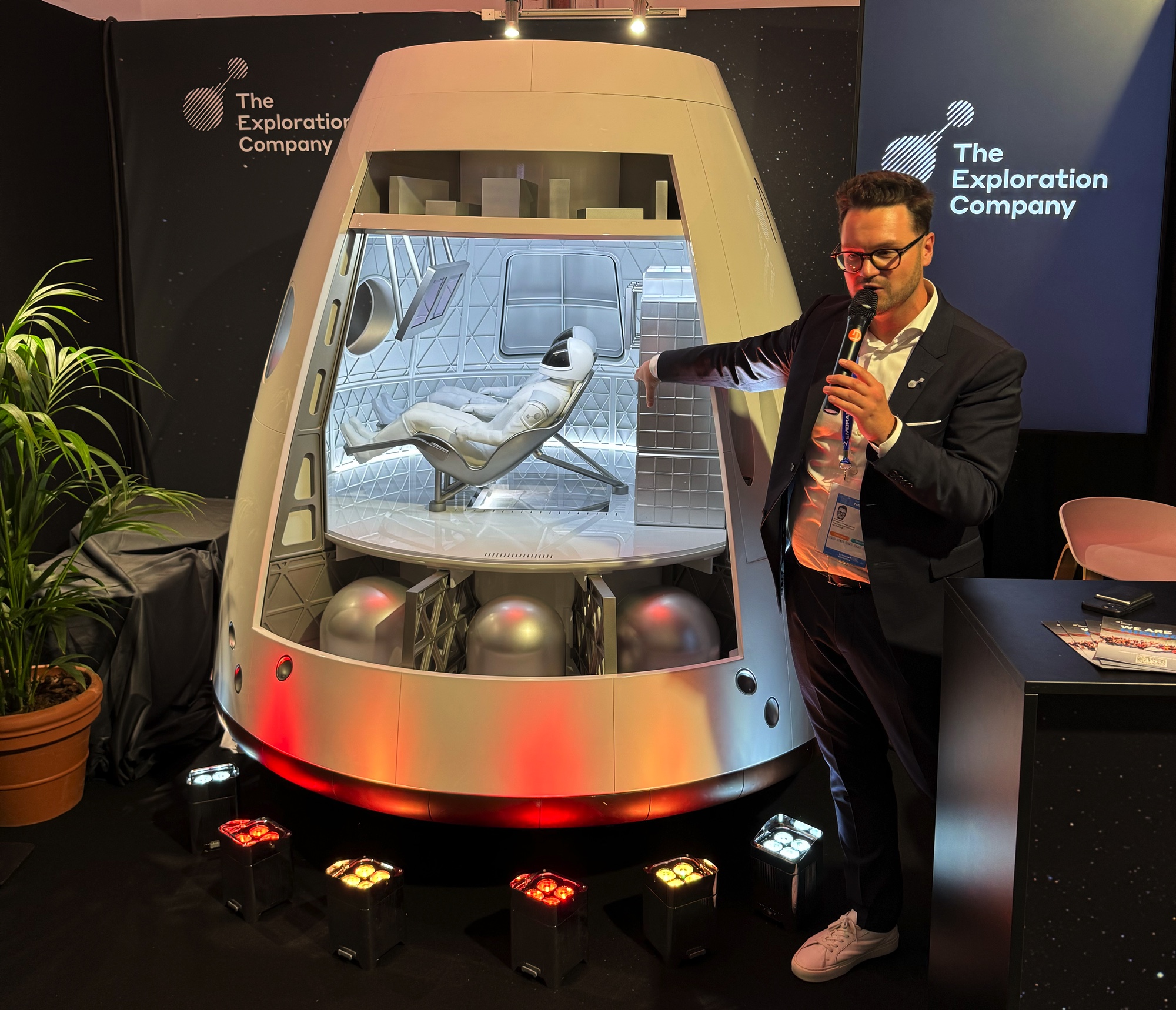European startup The Exploration Company is poised to make strides in human spaceflight, with plans to develop a crewed version of its Nyx spacecraft alongside its current focus on cargo missions. The company showcased an updated Nyx model during the Paris Air Show on June 16, emphasizing its long-term vision that includes a test flight to the International Space Station (ISS) slated for 2028, as part of a European Space Agency (ESA) program aimed at advancing cargo spacecraft technology.
While the Nyx spacecraft is initially designed for cargo transport, its creators are working toward a version intended for crewed missions. The displayed model featured accommodations for two astronauts in addition to the expected cargo.
“We have already done the first studies,” stated Victor Maier, lead for Germany and central Europe business at The Exploration Company, at the unveiling event. He elaborated that a fully crewed version of Nyx could support four to five astronauts and would incorporate an interior design complete with windows and touchscreens, similar to SpaceX’s Crew Dragon.
The exploration of a crewed Nyx follows the company’s recognition of the need to support missions to the ISS and forthcoming commercial space stations, allowing astronauts to work inside the spacecraft while docked. “So, we’re already ticking some of the boxes for certifying for human spaceflight once we’re docked to the station,” Maier noted.
Maier estimated that the development of a crewed Nyx would span approximately ten years and cost around one billion euros ($1.15 billion). He highlighted the urgency of discussing this initiative as ESA prepares for its ministerial conference scheduled for late November in Germany. “We need Europe to decide if we want to have this in Europe,” he remarked, underscoring the importance of the conference in Bremen where member states have the opportunity to make critical decisions regarding a crewed spacecraft initiative.
He stressed that governmental support would be essential for the project, as the costs exceed what private investment or national resources can cover. “We need Europe, because no country alone would be able to do it.”
In the meantime, The Exploration Company is concentrating on the cargo-focused Nyx. Following the unveiling, Maier shared that the company’s mission manifest includes six planned missions: a demonstration mission for the ESA, three missions associated with Starlab Space, and separate missions for Axiom Space and Vast.
The company’s first test spacecraft, known as Mission Bikini, launched last July during the maiden flight of Ariane 6. Unfortunately, the failure of the rocket’s upper stage prevented the spacecraft from separating and conducting its intended reentry test.
Looking ahead, the next test flight, labeled Mission Possible, will utilize a larger spacecraft weighing 1.6 tons and measuring 2.5 meters in diameter. Maier highlighted that this mission will thoroughly test all critical technologies for Nyx, including reentry and splashdown capabilities, unlike the previous smaller mission.
Mission Possible is also set to carry around 300 kilograms of diverse cargo, comprising cosmetic, pharmaceutical experiments, and even alcohol—illustrating the various applications envisioned for future space commercialization. This mission will launch aboard SpaceX’s Transporter-14, with a launch date anticipated shortly, although Maier could not provide specifics. Unofficial launch schedules suggest that Falcon 9 could lift off from Vandenberg Space Force Base in California as early as June 21.
The spacecraft will remain in orbit for approximately three hours before returning to Earth, splashing down in the Pacific Ocean. A recovery vessel has already set sail from an Alaska port to retrieve the spacecraft post-splashdown. Following Mission Possible, The Exploration Company has no immediate plans for additional test missions before the ISS demonstration, though Maier indicated that some ground testing might take place if deemed necessary.

